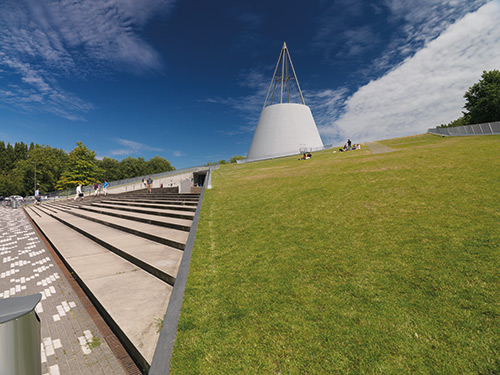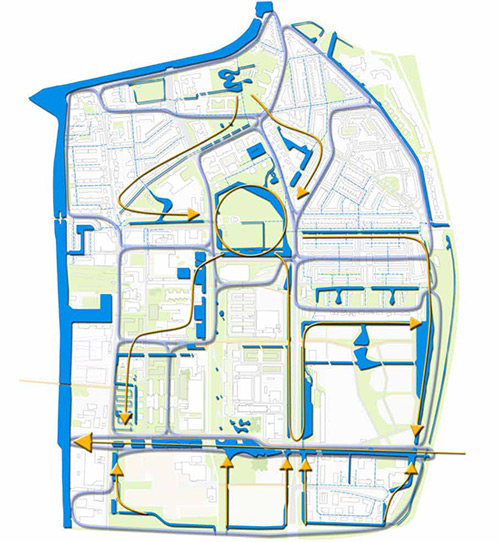Delft Zuidoost
The Delft-Zuidoost university district is undergoing fundamental restructuring and innovation. Climate measures developed in the pilot project can be incorporated into this flow of innovations. At least some of the proposed measures will be perceptible and visible to the knowledge institutes located in this area. Water-related innovations can thus be showcased in their own “front garden”.
Results
In two ateliers, all the stakeholders of the university district have used climate maps to explore promising options, such as, e.g., collecting all the rain water in the area itself, green roofs, heat recovery from waste water, water squares and water attractions, and trees to bind particulate matter.
These results enable the Delft Spetterstad process to get off to a good start. The outcomes of the testing ground serve as the points of departure for the subsequent process for residents’ and stakeholders’ participation. A second pilot project has meanwhile been conducted for this area.
This pilot project has resulted in a green-blue map of opportunities, which has subsequently been scored for ecology, quality of the living environment, peak water storage, water structure, and climate adaptation.
Each measure has been examined with respect to technical feasibility and the feasibility of adding green and/or blue. This was followed by a cost estimate and a cost/benefit analysis using the TEEB methodology.

Follow-up
The Green-blue project involved the collaboration of stakeholders in the area, aimed at mapping out integrated solutions to the green and water taskings. It has resulted in the Green-blue map of opportunities comprising 180 measures. Examining both the entire area and some individual sub-areas has produced solutions that are much more (cost) efficient. The TEEB project in the city has provided a picture of the overall social costs and benefits of the Green-blue project.
The Green-blue project demonstrates a successful working method that offers opportunities for other locations. The added value of the project is spread across two spheres. Firstly, the options of an area to adapt to climate change have been examined in detail. Secondly, the parties involved have conducted this examination in collaboration, enabling them to tie in as much as possible with the wishes and possibilities of the parties that will substantiate the restructuring of the area.

Green-blue structures in Delft Zuidoost
